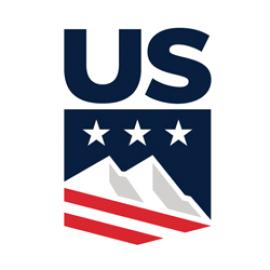2023 Congress Notes - Day 1

FTP site with agendas, minutes, etc.: https://media.usskiandsnowboard.org/Athletics/Alpine/Congress-2023/
U16 AND OLDER WORKING GROUP
Random Seeding
U16 Nationals seeded by TRS (random seeding with butterfly), with a separate randomization for SG
This was approved by the working group and will be brought up to the Development Subcommittee
A previously-tabled proposal to eliminate USSS points was removed from the slate
A proposal to seed all regional U16 events (RPS, regional champs, etc.) was narrowly voted down (6-5) and will not be brought to the Development Subcommittee. This could be implemented at the regional level if the regional committees deem it needed/appropriate.
U18 start limits
Proposal one – first-year U18’s have 30 tech starts, plus the existing exceptions. Second-year U18’s have 35 tech starts, plus the existing exceptions.
Proposal two – U18 athletes are limited to 30 starts (plus the existing exceptions), but they will be allowed to finish a series that they start, even if that puts them over 30 total. This would conceivably allow athletes to have up to 33 tech starts (plus the existing exceptions)
Proposal One was voted favorably over Proposal Two. Proposal One was voted favorably over the existing limits of 30 for all U18 athletes (plus exceptions). So Proposal One will be brought to the Development Subcommittee.
There is a proposal that will be considered at the fall FIS meetings (for implementation in the 24-25 season) that would limit U18 starts to 30/40 first/second-year, with no exceptions for NC, NJC, WC, etc.
U14 AND UNDER WORKING GROUP
A clarification to the rules about SG training runs was proposed such that the decision about whether to make the training run a SG freeski instead will be a jury decision, to be made at the TCM and not before. This was passed and will be brought to the Development Subcommittee.
A proposal was made to increase the vertical drop allowed for U10 SL (up to 120) and Kombi (up to 170) to align with U12 vertical drops as a way to alleviate complications for hosts running U10/U12 events. The motion was tabled pending a closer look at vertical distances and the course-setting matrix as a whole.
A proposal was made to make it so that divisions can designate certain U14 and under races as “Open,” and that they’ll be available to others in the region to travel to. In theory, this proposal simplifies and streamlines the existing system. The proposal passed at the working group level and will be passed to the development subcommittee.
COLLEGE WORKING GROUP
There was good discussion about the number of USST athletes who are also engaged with college, either academically or athletically. 55% of the USST men are in college or have graduated, and approximately 65% of the women. USST and college coaches agreed on the need to communicate with each other and with the athletes, and reaffirmed their commitment to get the athletes skiing at their full potential and highest level.
There was some discussion on ways to alleviate the need for PG years, in other words to have athletes be more able to matriculate into college programs directly from high school. There’s an exemption for skiing and hockey to the NCAA “ticking clock” that essentially allows athletes in those sports to start college later and still have four years of eligibility. There was mention of possibly closing that exemption and it will be discussed and investigated further.
There was discussion about collegiate scheduling to help facilitate college athletes access to upper level programming outside of the collegiate ecosystem – specifically NAC and National Team programming.
There was discussion of re-starting the National Collegiate Ski Coaches Association – no action was taken but it will be discussed further with the hope of reestablishing that group.
QUOTAS WORKING GROUP
There was a proposal to make all quotas to divisional and regional championships equal between the genders, as has been done with national events. The proposal was not voted through because of concerns about discrepancies in populations – in some cases there are significantly more girls racing than boys, and vise-versa. There was a new proposal to ask the Eastern Region to calculate their U14 and U16 Champs quotas separately, as is already being done in the other regions, so that the quotas per gender are sure to reflect the populations and performance histories accordingly.
